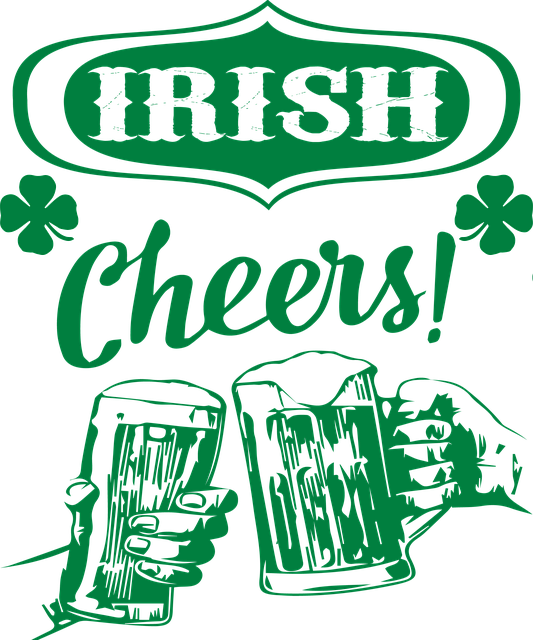The Irish American Flag is a cultural emblem that symbolizes the intertwined histories and shared values of Irish immigrants and their descendants in the United States. It represents the dual identity of Irish Americans, blending the green fields and Celtic heritage of Ireland with the reds and blues of American patriotism. This flag, often displayed during St. Patrick's Day and other significant events, encapsulates the enduring cultural legacy, contributions, and pride of the Irish-American community. It is a testament to the resilience and impact of Irish immigrants in America, celebrating their vibrant heritage and fostering unity among those who honor both their Irish roots and their American citizenship. The flag's design—a green field with a white Celtic harp, symbolizing peace and unity—is a visual reminder of the enduring cultural and historical bonds between Ireland and America.
Embark on a journey through the vibrant tapestry of Irish-American heritage as we explore the profound significance of the Irish American Flag. This article delves into the symbol’s evolution, from its inception to becoming an enduring emblem of unity and shared identity. We will unravel the cultural narrative woven within its design elements and celebrate how this flag has been embraced in parades and events across generations. Join us as we honor the Irish American Flag today—a beacon of pride that illuminates our collective roots.
- The Significance of the Irish American Flag: A Symbol of Heritage and Unity
- The Evolution of the Irish American Flag: From Concept to Emblem
- Historical Context: The Irish-American Journey Reflected in the Flag's Design
- Design Elements and Their Cultural Meanings: Decoding the Irish American Flag
- Celebrating Identity: How the Irish American Flag Has Become a Staple in Parades and Events
- The Irish American Flag Today: A Beacon of Pride and a Reminder of Our Shared Roots
The Significance of the Irish American Flag: A Symbol of Heritage and Unity

The Irish American Flag stands as a potent emblem of cultural identity and unity among the Irish diaspora in the United States. This unique flag, often displayed with pride during St. Patrick’s Day celebrations and other events, weaves together the rich heritage of Ireland with the patriotic sentiments of American citizenship. It symbolizes the enduring connection between the Emerald Isle and its descendants who have contributed significantly to the social, political, and cultural fabric of the United States. The flag’s design, typically featuring a green field representing Ireland atop a white horizontal bar which stands for the peace achieved post-Troubles in Northern Ireland, and then the red and white stripes symbolizing America, encapsulates the dual identity many Irish Americans hold dear. It is a visual testament to the harmonious blend of two nations’ values and traditions within one community, reflecting a shared history of migration, hardship, triumph, and integration. The Irish American Flag is not just a decorative piece but a representation of the collective memory, aspirations, and achievements of Irish Americans, embodying their commitment to both their ancestral homeland and their adopted country. It serves as a rallying point for Irish Americans to celebrate their heritage, honor their ancestors, and demonstrate solidarity with contemporary Ireland.
The Evolution of the Irish American Flag: From Concept to Emblem

The Irish American Flag, a vibrant banner that intertwines the cultural heritages of Ireland and America, has undergone a significant evolution from its inception to becoming an enduring emblem of Irish-American identity. Its design, featuring a green field with a white Celtic harp encircled by a ring of golden stars, symbolically marries the green fields of Ireland with the Stars and Stripes of the United States. The flag’s origins can be traced back to the 19th century, during the Great Famine, when Irish immigrants sought to honor their homeland while embracing their new country. Over time, the flag has become a prominent feature at Irish-American festivals, parades, and community gatherings, signifying unity and pride among the diaspora. It represents a rich tapestry of shared history, values, and heritage that has been passed down through generations, embodying the resilience and tenacity of the Irish people in their newfound home. Today, the Irish American Flag stands as a testament to the enduring legacy of Irish immigrants in America, their contributions to the nation’s fabric, and the unbroken threads that connect them to the Emerald Isle. It is a visual symbol that captures the essence of bicultural identity for many Irish Americans, reflecting both a sense of belonging to the land of opportunity and reverence for their ancestral roots.
Historical Context: The Irish-American Journey Reflected in the Flag's Design

The Irish-American flag, a banner intertwining the emerald hues of Ireland with the stars and stripes of America, stands as a symbol of a rich and complex transatlantic journey. This tapestry of color and heritage reflects the historical odyssey of millions who emigrated from the Irish isle to the United States, seeking opportunity and escape from famine and hardship in the 19th century. The flag’s design encapsulates the duality of identity faced by Irish immigrants; it pays homage to their ancestral homeland while embracing their newfound American identity. As these early settlers wove themselves into the fabric of America, the flag became a powerful emblem of their resilience and determination, signifying the enduring bond between the two nations. It symbolizes not just the past, but also the future generations who continue to draw strength from both cultures, celebrating St. Patrick’s Day and honoring American patriotism with a single, unifying standard that speaks to the heart of Irish-American heritage.
Design Elements and Their Cultural Meanings: Decoding the Irish American Flag

The Irish-American flag, a vibrant emblem of unity and heritage for the Irish diaspora in the United States, incorporates elements deeply rooted in both American and Irish cultural traditions. At its heart lies the green field, symbolizing the Emerald Isle’s lush landscapes and the enduring spirit of its people. The white shamrock at the center is a nod to one of Ireland’s most recognized symbols, signifying the unity and purity of Irish heritage within the broader American tapestry. Encircling these emblems, thirteen stars form a circle, reflecting the original number of colonies that declared independence to become the United States, thereby highlighting the fusion of Irish identity with American patriotism. Each star represents not only a state but also a connection to the rich history and traditions of both nations. The flag serves as a powerful statement of pride and belonging, acknowledging the shared journey and contributions of Irish Americans to the fabric of American society. It is a visual narrative that honors the past while embracing the future, serving as a constant reminder of the cultural fusion that defines the Irish-American experience.
Celebrating Identity: How the Irish American Flag Has Become a Staple in Parades and Events

The Irish-American community has a rich tapestry of heritage and identity, one that is often celebrated through various cultural expressions. Among these, the Irish American Flag has become a symbol deeply entwined with pride and unity during parades and events. This flag, a vibrant blend of green, white, and orange, not only pays homage to the Emerald Isle but also signifies the enduring legacy of Irish-Americans in the United States. It is a visible emblem that punctuates festive gatherings, from the grand Saint Patrick’s Day parades to local community celebrations. The flag serves as a reminder of the shared cultural ties and the contributions Irish immigrants and their descendants have made to the nation, fostering a sense of belonging and solidarity among attendees. Its presence in these events not only adds a touch of tradition but also a splash of colorful identity that resonates with the participants, making the Irish American Flag an indispensable part of these festivities. As parades wind through city streets, the flag is often seen waving proudly, carried by young and old alike, a testament to the enduring spirit of Irish-American heritage. It is a staple that has transcended mere decoration, becoming a rallying point for those who wish to honor their roots and celebrate their identity with fervor and joy.
The Irish American Flag Today: A Beacon of Pride and a Reminder of Our Shared Roots

The Irish American Flag, a symbol deeply woven into the fabric of shared heritage, stands as a beacon of pride for millions across the United States. This distinctive flag, with its green field and gold harp centered against a white background, represents the enduring legacy of the Irish in America. It is a testament to the resilience and contributions of Irish immigrants who sought new beginnings on American shores. Today, it waves not only as a marker of identity for those with Irish ancestry but also as an emblem that underscores the rich cultural tapestry of the United States. The flag’s presence in parades, community gatherings, and even as a decorative element in homes and businesses, serves as a daily reminder of the roots that extend across the Atlantic, binding together the histories and future aspirations of both nations. It is a symbol of unity and pride for Irish Americans who cherish their heritage and the new land they call home.